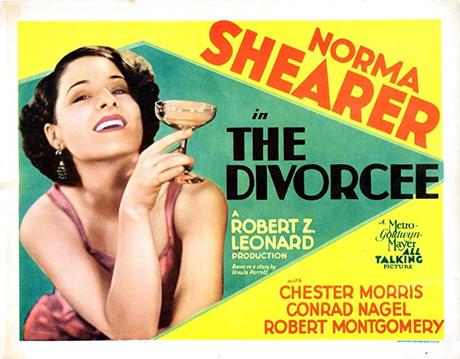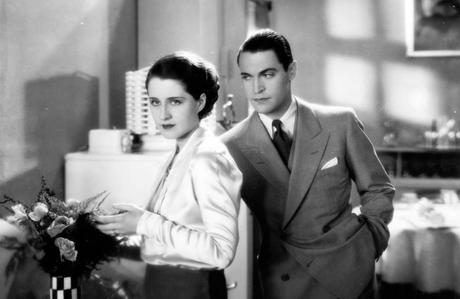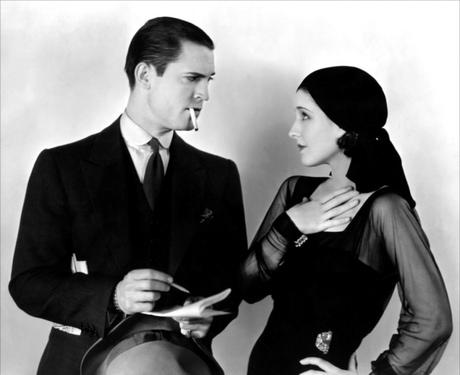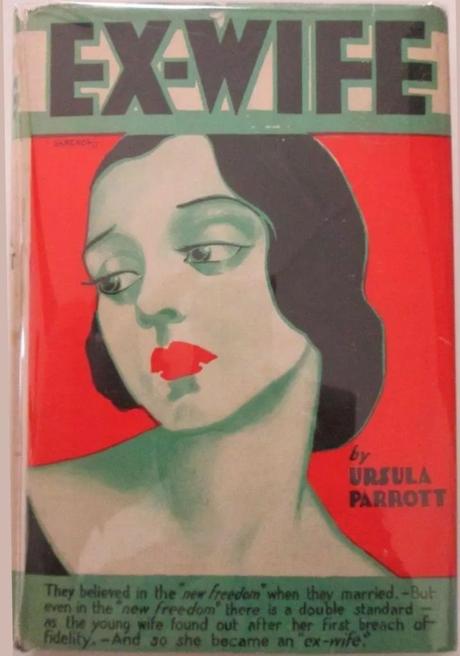
When you’re talking about essential films from the pre-Code era, 1930’s The Divorcee easily ranks near the top of the list, along with movies like Red-Headed Woman, Baby Face, and The Story of Temple Drake. But by the time the movie was released, it wasn’t the first time the story had made an impact on pop culture. The Divorcee is based on the 1929 novel Ex-Wife by Ursula Parrot. Her story about a woman who engages in a series of affairs after her marriage ends was so scandalous at the time that it was initially published anonymously and ultimately helped set the stage for many other stories about single women that would come in later years. So how do the book and the movie compare?
Book vs. Movie Differences
As was the case for A Free Soul, The Divorcee is a pretty loose adaptation of its source material. They’re both about a woman who sees several different men after her marriage ends, which is caused by her having an affair with her husband’s best friend. Eventually, she falls in love with a man who is married to a woman he feels obligated to stay married to after she is disfigured in a car accident he caused. She decides that partying and seeing many different men isn’t right for her and later decides to settle down. That’s about as far as the similarities go.

If you watched The Divorcee and thought the character of Ted (played by Chester Morris, named Peter in the book) was a real piece of work, the movie version of the character is actually the significantly more likeable version of the character. I didn’t even get 20 pages into the book before I was rooting for Pat (named Jerry in the movie, played by Norma Shearer) to have no regrets about this marriage ending because he is so jaw-droppingly awful. While Jerry and Ted are childless in the movie, Pat and Peter do have a baby in the book. However, Peter wasn’t exactly thrilled about parenthood and when their infant son dies unexpectedly, Peter is unbothered and can’t understand why Pat struggles with the loss. He’s just happy to have a thin wife again. When Pat and Peter spend an evening together years later, the subject of their deceased child comes up and his response is basically, “You’re still going on about that?” The book also details some domestic violence from Peter, most notably an incident when Peter threw Pat through a glass door, causing injuries serious enough to require stitches. (Don’t worry — even though Jerry and Ted get back together at the end of movie, Pat does not get back together with Peter at the end of the book.)
Perhaps the most famous scene from The Divorcee is the one where Jerry tells Ted off for his double standards and tells him that from then on, he is the only man her door is closed to. That does not happen in the book. While The Divorcee very explicitly calls out double standards regarding infidelity, Ex-Wife doesn’t quite take the same angle. Instead, it depicts Pat and Peter as being a couple who got married young, didn’t really know what they were doing, and weren’t really ready to settle down.
In the book, it’s said that Pat and Peter were frequently out on the town and both engaged in behavior that made the other jealous. The book doesn’t even specifically say that Ted had been cheating on Pat. Instead, it talks about him acquiring “two or three slightly misunderstood pretty wives” who would often invite him to spend time with them and mentions that he’d often be flirty with other women at parties, which made Pat jealous, but she never called him out on it. When she has her affair with her husband’s best friend, it’s not specifically in retaliation for him cheating on her.

While their marriage promptly ends afterwards in the movie, there’s a much longer gap between the time Peter leaves Pat and the official divorce. After Pat owns up to her affair, there’s a time when they try to work through it but it all falls apart after someone Pat knows comes to visit, tells Peter some lies about Pat’s past, and Peter decides he wants out because he thinks he’s in love with Pat’s (former) friend.
There is quite a bit of content in the book that never made it into the movie. In the book, Pat moves in with her friend Lucia (and subsequently with another friend, Helena) and the two of them often go out to parties together. Lucia had been through a divorce herself, so she frequently gives advice to Pat, but all of this is cut from the movie. And, for obvious reasons, a storyline about Pat needing to get an illegal abortion, resulting in her being asked out by the physician she trusted to escort her to the appointment, wasn’t even alluded to the movie.
In the book, we also see more of Pat’s day-to-day life, like her career as a fashion copywriter. Unlike Helen from Wife vs. Secretary, Pat views her job as something of a necessity, not something she does because she genuinely loves it. She also becomes something of a mentor to a younger writer who she works with for a while and Pat helps her both with her career and her personal life. And when Pat meets with the wife of the man she had been seeing who had been disfigured in a car accident, Pat ends up becoming a good friend of hers. Pat not only makes it possible for her to start over with her husband, Pat helps her get new clothing and face masks, giving her the confidence she needs to fully embrace this new start in her life.
Is the Book Worth Reading?

With The Divorcee being one of the most essential of all pre-Codes, I thought this was going to be a situation where the book was even more scandalous than the movie. And in many ways, it is. But in the end, I feel like this is a rare case where the 1930s Hollywood version of the story actually feels more modern by todays standards.
Ex-Wife is a rather fascinating product of its time. It feels quite modern in some respects. Like the part where Pat and Lucia talk about what it means to be an ex-wife and Lucia assures her that not all divorced women are necessarily ex-wives; that you’re not really an ex-wife as long as you don’t let it become a defining trait. I could absolutely picture a similar scene in a more modern movie. But while a sentiment like that may seem refreshing on the surface for a book first published in 1929, there are plenty of more old fashioned attitudes mixed in. The real reason Lucia doesn’t want Pat to wallow in being ex-wife is because she insists that getting back out there and trying to find a new husband is the best thing to do, even though Pat isn’t really in a hurry to remarry. She tells Pat platitudes like how all attractive women are given a certain number of pieces of gold and that it’s no big deal to squander a few of them, but after a certain point, you better start saving for old age. (Pat wasn’t even 30 years old by the end of the book.)
What I most sorely missed in the book was the condemnation of double standards and Pat getting the chance to really tell off her husband. Those parts specifically are what make the movie resonate strongly with many viewers over 90 years later. Without that aspect, it feels like the book just doesn’t pack the same punch that the movie does.
It’s very easy to understand why Ex-Wife caused quite the scandal when it was first published. It does, indeed, still hold the power to shock, but likely for different reasons. Pat’s string of affairs after the end of her marriage seems far less shocking today than than how generally horrible some of the men in Pat’s life are — specifically Peter.
Overall, I liked the book and Ursula Parrot’s writing style. The way it’s written, it reads like the inner thoughts of someone who has been through an difficult event and is trying to process everything that came along with it. It’s not always polished, but it’s absolutely perfect for this type of story. And if you’re interested in stories about life in New York City during the 1920s, there’s a whole lot to like about this book.
This review is part of the 2021 Classic Film Summer Reading Challenge hosted by Out of the Past. For more reviews on books related to classic film, be sure to follow the #ClassicFilmReading hashtag on social media.
